Contracts are core to every business. All important decisions, from staffing to spending, are bound by a contract. Is it possible, then, for companies to get a holistic view of their business operations by accessing their contract metadata (the data inside contracts) and process data (the data surrounding contract processes)? Could contract data actually reveal high-level understanding of how today’s businesses operate?
These were the questions that led us to create the first ever Digital Contracting Data Trends Report. We developed this report using aggregated, anonymized contract data to create an operational data layer across organizations from various industries, geographies, and sizes.
How well are they adapting to changes in the broad economic climate? What large-scale trends are being formed by their actions? We’ve included some of our favorite insights below, but download the full report to see for yourself.
Valuable Insights from Contract Data Analysis
Across Ironclad’s diverse customer base, spanning industries, locations, and size, we learned:
1) Companies are prioritizing agility.
Contract cycle times steadily decreased after 2019, dropping from a pre-pandemic average by 10 days (60%) in 2022. As companies were pushed to compete on speed and scale, they came to rely more on clickwrap agreements. Measured against pre-pandemic levels, the report found clickwrap contract volume increased by 274% in 2020, and 443% in 2021.
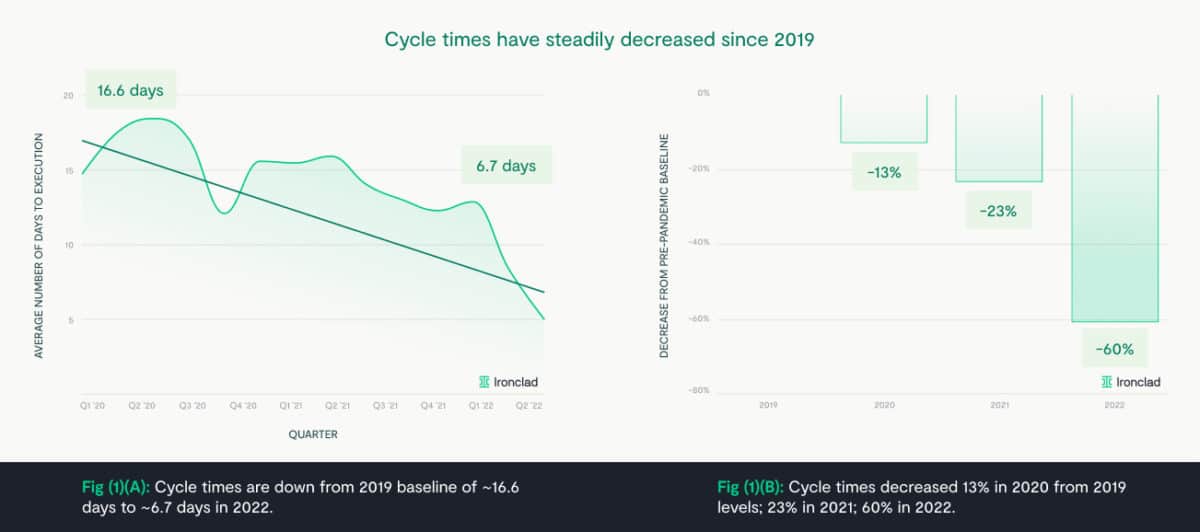
2) Digital collaboration is on the rise.
Teams are increasingly embracing browser-based collaboration for their contracts, demonstrated by a 262% increase YoY in usage of Ironclad’s browser-based contracts editor, and a 150% quarter-over-quarter increase in browser-based negotiation.
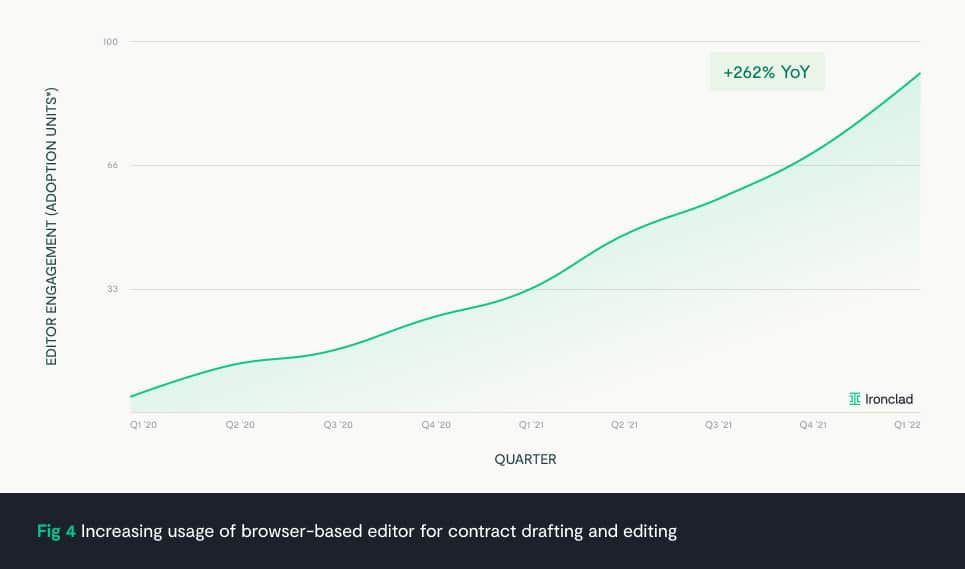
3) Risk control is a top priority.
Scrutiny of contracts is at an all-time high as companies seek to gain greater control and visibility into their obligations within contracts. With companies seeking to control risks lurking in their contractual obligations in 2020, the number of contract search volume queries rose by 470% compared to pre-pandemic levels, with 2021 levels increasing by 335%.
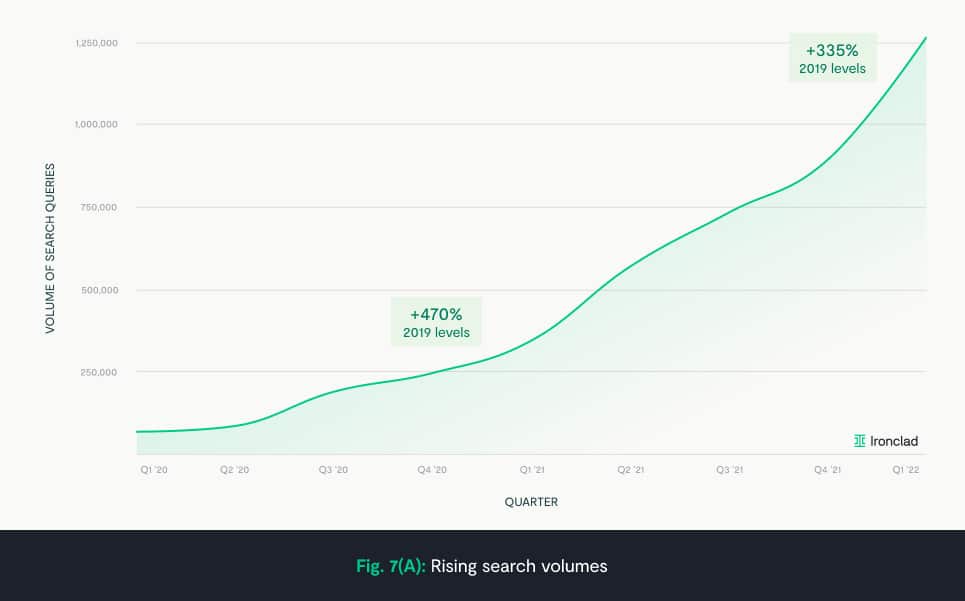
When COVID initially began peaking across the United States in April 2020, there were record high levels of companies searching for “force majeure” clauses – ones that relieve a party from performing a contract if performance is highly impractical due to events like war, lockdowns, pandemics, etc – in their contracts. With Delta and Omicron, the report found a 181% and 32% quarter-over-quarter spike, respectively, for the same search term.
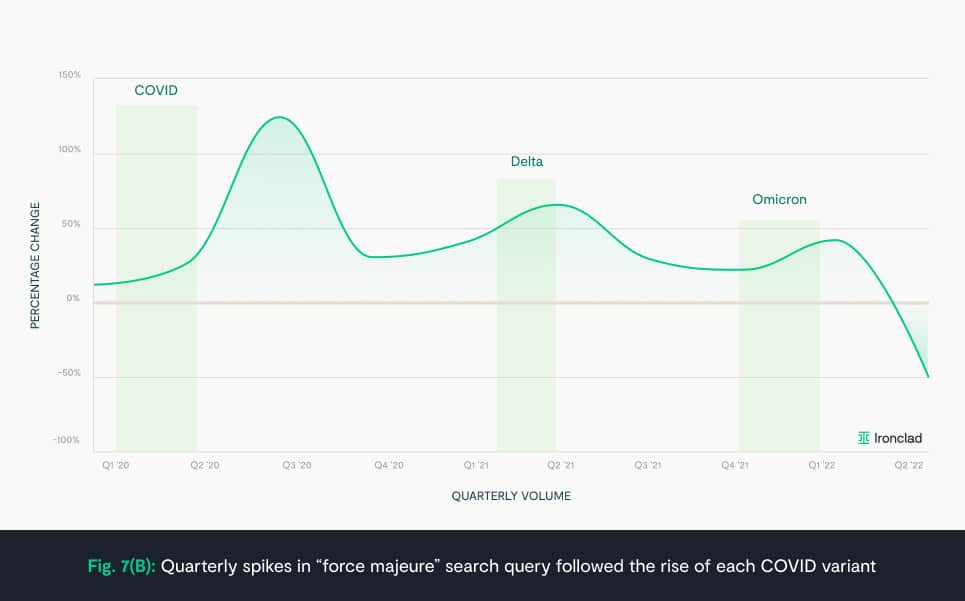
4) Staff reshuffling is real.
In 2020, offer letter contracts saw a 42% increase from the 2019 pre-pandemic baseline levels, while there was also a 247% increase in severance and termination agreements. In 2021, offer letters increased 177% from 2019 levels, and severance and termination levels grew 97%. These findings demonstrate that signs of the Great Reshuffling can be seen through contract data.
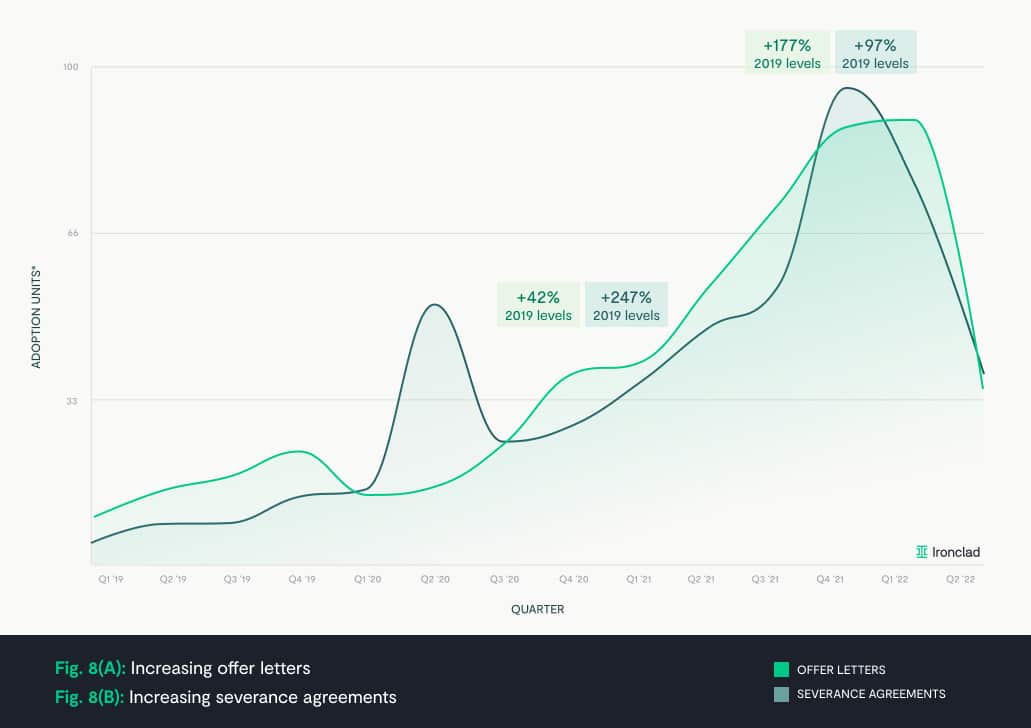
5) Consultants and services are in demand.
Ironclad data showed a massive uptick in partnerships and consulting agreements, growing by nearly 80% in 2020, and by 119% in 2021, compared to 2019 levels. In a similar vein, procurement agreements (commonly used for software and other services) grew by 250% in 2020, and 220% in 2021, compared to pre-pandemic levels.
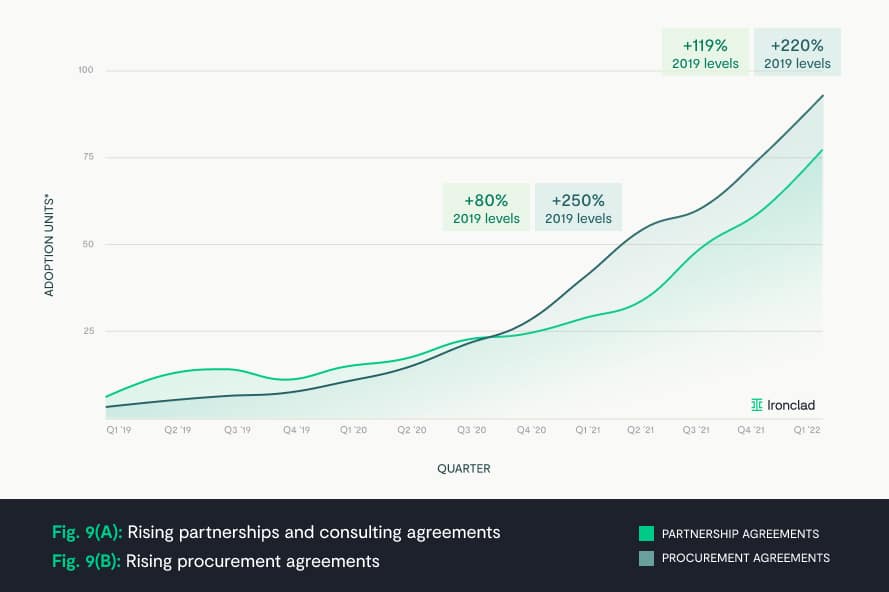
Contract Data: From Numbers to Knowledge
Though every business runs on contracts, few have the tools to mine them for the operational and data-driven insights they can deliver. By providing a platform that can not only extract metadata from existing contracts, but also generate unique workflow insights about the contract process, Ironclad can help companies paint a much more holistic picture of the business world through contract data. Check out Ironclad’s new Digital Contracting Data Trends Report to learn more.
Ironclad is not a law firm, and this post does not constitute or contain legal advice. To evaluate the accuracy, sufficiency, or reliability of the ideas and guidance reflected here, or the applicability of these materials to your business, you should consult with a licensed attorney. Use of and access to any of the resources contained within Ironclad’s site do not create an attorney-client relationship between the user and Ironclad.




